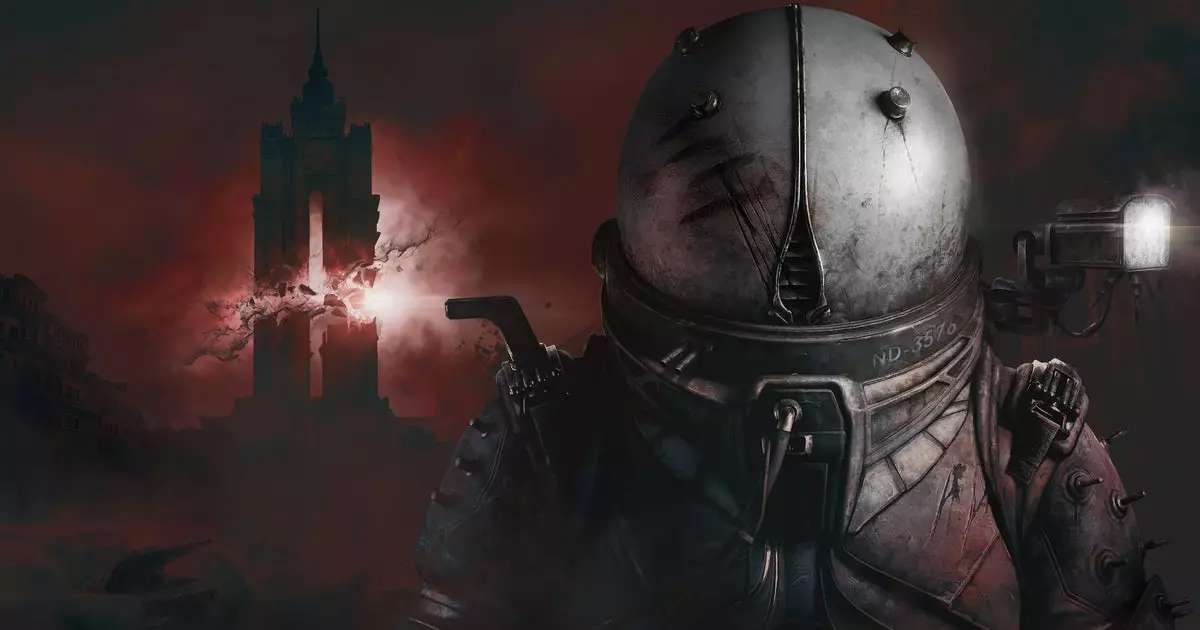In the ever-evolving landscape of video games, where innovation is both celebrated and scrutinized, Bloober Team’s ‘Cronos: The New Dawn’ emerges as a provocative title that intertwines the threads of time, horror, and a meticulous exploration of cultural identity. The game proposes a unique narrative where players navigate between a dystopian future filled with grotesque entities and the vibrant yet tumultuous backdrop of 1980s Poland. Such a setting offers fertile ground for exploring themes of nostalgia and loss, allowing players not just to play a role but to engage in a deeper reflection on how the past shapes the future.
This gameplay mechanic of traversing time while battling tentacled monstrosities—weighing heavily on the mind—creates an unsettling feeling of being ensnared by both history and horror. The fusion of these elements allows for an immersive experience that not only amplifies suspense but also demands intellectual engagement from the player.
The Visual and Atmospheric Design
One cannot help but discuss the aesthetic choices that Bloober Team has made in ‘Cronos: The New Dawn.’ The visual design harks back to the eerie ambiance that was a hallmark of their previous works like ‘The Medium.’ The foreboding landscapes are characterized by decaying architecture and a strong emphasis on elemental horror—becoming a prompt reminder of humanity’s fragile position in a chaotic universe. The environments evoke emotional turmoil, and while the scenery may feel grotesque and alien, it’s beautifully rendered enough that players are compelled to explore every haunting corner.
The suit worn by the protagonist, reminiscent of sci-fi horror classics, is designed to evoke controversy. Some savvy gamers might view it as a homage to genres that shaped the sci-fi horror narrative, while others might see elements that verge on the absurd. This dichotomy is essential; it compels conversations around character design and the thematic intentions behind the visual choices in horror games.
Gameplay Mechanics and Strategy
As players assume the role of a “Traveller” within the game’s collective, they are tasked not only with survival but also with navigating moral conundrums tied to their quest. The primary mission centers around resurrecting lost souls from Poland’s past. The incorporation of the “Harvester” gauntlet deepens the gameplay with an innovative mechanic: players must extract the very essence of individuals who await grim fates. The philosophical underpinnings of such an act raise questions about destiny, free will, and the ethical implications of meddling with time.
Combat, traditionally a core element in any horror game, appears robust in ‘Cronos: The New Dawn.’ Players will experience a range of weaponry, from hand cannons to shotguns, all while pitting their skills against an array of horrific manifestations that threaten the tranquility of their world. The game promises an engaging combat experience, moving beyond the static melee encounters reminiscent of their previous titles. This shift in focus towards dynamic and tactical engagements highlights Bloober’s growth and ambition as they carve out their niche in horror gaming.
Cultural Commentary and Continuity
What truly captivates about ‘Cronos: The New Dawn’ is its reflection on Poland’s cultural landscape through a fantastical lens. Bloober Team has continuously explored their heritage by setting games in distinctly Polish environments and intertwining cultural narratives within the horror genre. The ‘observer’ parallels and callbacks to the previously established lore invite intrigue and speculation about what other cultural narratives will unfold as the game progresses. This meta-commentary elevates the game beyond simple horror; it becomes an avenue for exploring and understanding a national psyche marred by historical turbulence evidenced by the exploration of how horror manifests within different cultural contexts.
‘Cronos: The New Dawn’ stands as a beacon in the realm of sci-fi horror, mediating a rich tableau of gameplay, design, and deeper social commentary, all while prompting players to grapple not just with monsters lurking in the dark, but also the complexities of time, culture, and identity. As the release date approaches, anticipation builds for this compelling installation that promises more than mere thrills, ready to challenge our understanding of both gaming and horror.

